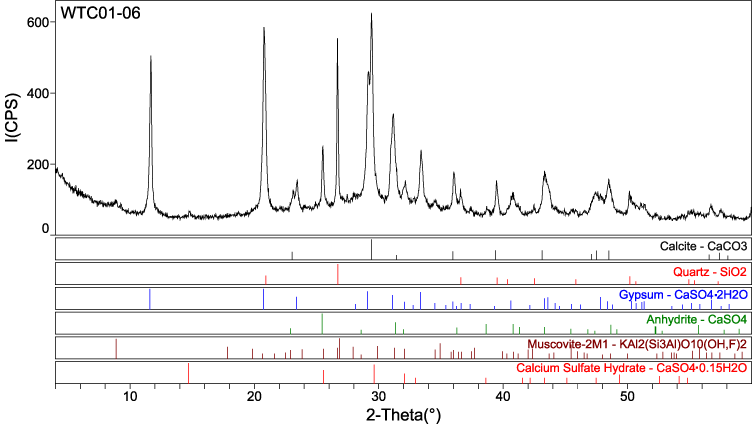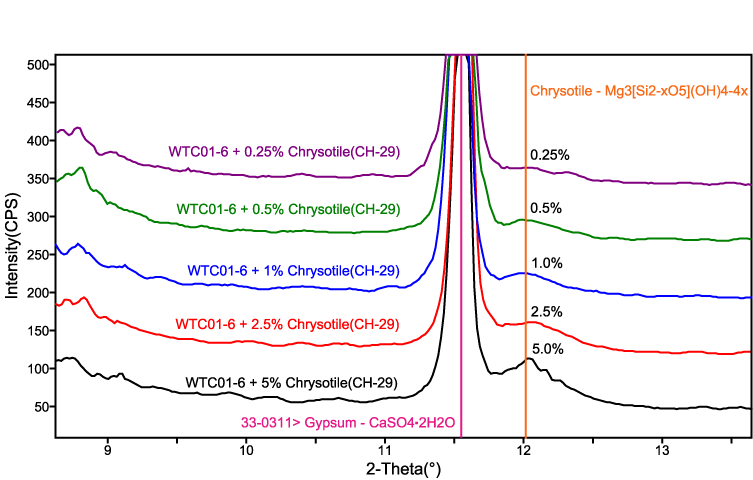 |
|
|
||||
| OFR 01-0429: X-Ray Diffraction (XRD) Analysis |
| About USGS / Science Topics / Maps, Products & Publications / Education / FAQ |
X-Ray Diffraction (XRD) analyses of WTC samples (Table 1, on the Integration of Results page) indicate that most samples contain varying amounts of crystalline quartz, gypsum, calcite, anhydrite and amorphous material (e.g. XRD Figure 1). Other phases identified in small amounts include: muscovite, feldspar, magnesiohornblende, lizardite (non-asbestiform serpentine), dolomite, bassanite, illite, portlandite, larnite, polymorphs of calcium silicates, possible asbestiform chrysotile, and others. The results are reported as major (>20% by weight), minor (>5% but <20% by weight), and trace (<5% by weight). These ranges were determined by operator experience for the purpose of informing analysts and other interested parties of the relative concentrations of the phases present in samples.
All of the above mentioned phases can be components of the building dry wall
material, concrete foundation, and/or insulation. Determining the presence
of chrysotile at very low concentration levels by XRD is difficult due to the
amount of other crystalline substances and the increased background due to
large amounts or X-ray amorphous "slag wool," contained in all dust samples. It is possible that small amounts of chrysotile
(probably <1.0%, XRD Figure 2) may be present in a few samples (see Table 1 on the Integration of Results page). The presence of chrysotile can sometimes be verified by other analytical methods;
due to the heterogeneity of the samples, the splits that were made may not
be representative, so results may vary. More work may be necessary to try to
separate the chrysotile from the other material to determine if chrysotile
is indeed present in any of the samples, especially if it's presence can be
verified by only one method.

XRD Figure 1. X-ray diffractogram of World Trade Center dust sample WTC01-6. Note domination of peaks from calcite, quartz, gypsum, and anhydrite, the main minerals in most of the 33 samples collected. Also note the increased background, which indicates a major concentration of X-ray diffraction amorphous (non-crystalline) material. This sample contains no detectable chrysotile asbestos and was therefore used in preparing synthetic mixtures of dust + chrysotile.

XRD Figure 2. Details of a diagnostic X-ray diffraction peak attributed to chrysotile (NIOSH standard CH-19) in synthetic mixtures of chrysotile in sample WTC01-6 in weight percent. This set of diffractograms was used as a guide for determining relative chrysotile concentrations in the 33 dust samples collected from around the WTC site. Sample splits were not homogenous so results can vary.
NEXT Section of Report: Laboratory Reflectance Spectroscopy (RS) Studies
Back to document Table of Contents
For further information concerning XRD analyses, contact:
Stephen J. Sutley
ssutley@usgs.gov
| AccessibilityFOIAPrivacyPolicies and Notices | |
| |
|